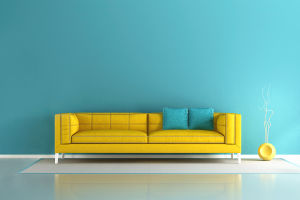Sofas are an essential component of modern home furnishings, having evolved from simple seating into complex pieces that combine comfort and aesthetics.
Understanding the evolution and characteristics of modern sofas not only helps in selecting the right one but also integrates it better into our living spaces.
1. Historical Background
The origins of the sofa can be traced back to ancient civilizations, but the modern concept of the sofa began in 18th-century Europe. At that time, aristocratic families started designing more comfortable and luxurious seating to showcase their wealth and status.
These sofas often featured elaborate wood carvings and high-quality fabrics, representing the opulence and elegance of the era. With the advent of the Industrial Revolution, sofa production became more mechanized, allowing a broader audience to enjoy this comfort.
2. Design Philosophy
In the 20th century, modern sofa design underwent several significant transformations. The rise of minimalist style led designers to abandon ornate decorations in favor of simple lines and functionality. This style emphasizes the basic form and comfort of the sofa, making it easier to integrate into various home environments.
Additionally, functional design became an important feature of modern sofas. Many contemporary sofas are not just seating but also incorporate storage, sleeping options, and other functions to meet diverse living needs.
3. Material Choices
Modern sofas are available in a wide range of materials, from traditional wood and fabric to modern leather and metal, each with unique advantages.
Wooden sofa frames typically offer good load-bearing capacity and durability, while leather sofas are favored for their high-end appearance and ease of cleaning. Fabric sofas provide a broader range of colors and textures, allowing for personal customization. Recently, the use of eco-friendly materials has gained attention, such as sofas made from recycled fibers and natural materials, which are both environmentally friendly and aesthetically pleasing.
4. Future Trends
Looking ahead, modern sofa design will continue to evolve towards smart and eco-friendly solutions. Smart sofas equipped with various high-tech features, such as built-in speakers, charging ports, and automatic adjustment functions, will make our lives more convenient.
Additionally, with the rise in environmental awareness, sofa manufacturers will focus more on material sustainability and eco-friendly production processes. This includes using low-VOC (volatile organic compounds) adhesives and natural dyes to minimize environmental impact.
5. Selection and Maintenance
When choosing a modern sofa, it's important to consider not only design and materials but also how well it fits the intended space and personal needs. For small apartments, multifunctional sofa beds might be a good option, while larger spaces can benefit from multiple sofa pieces to accommodate different scenarios.
Regular cleaning and maintenance are also crucial for keeping the sofa in good condition. Fabric sofas require regular vacuuming and washing, while leather sofas need specialized cleaners and conditioners.
In summary, modern sofas are more than just seating; they are a crucial element of home design. By understanding the historical background, design philosophy, material choices, and future trends of sofas, we can make better choices that enhance both the comfort and aesthetic of our living spaces.


